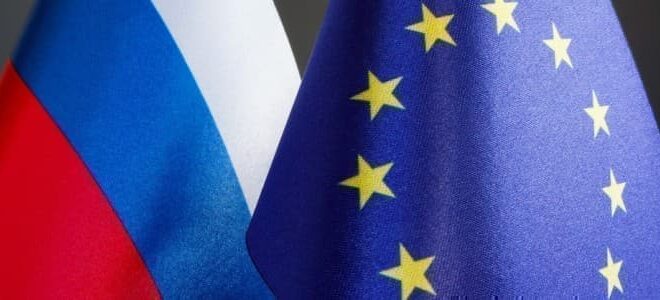EU member states appear to have little appetite for adjusting the G7 price cap on Russian oil exports, despite growing evidence that the value of Russia’s main Urals crude is rising above the previously set level of $60 per barrel.
Poland and its smaller Baltic neighbors previously took the most hawkish stance in trying to use the price cap to limit Russia’s oil revenues, but more recently they have backed away from their calls to set it lower.
Similarly, there does not seem to be any immediate concern among major EU oil importers that the cap might need to be raised in order to keep Russian oil flowing into the global market, even though benchmark Brent prices have broken above $80/bbl.
“There is no movement currently in the Council [of the European Union] with the oil price cap,” said one Baltic diplomat, who did not expect any discussion of the issue before the fall.
Thus far, the cap has arguably achieved its dual and somewhat contradictory aims of helping to keep Russian oil flowing to global markets, and keeping prices affordable for Western consumers, while limiting Moscow’s revenues from those oil sales.
Officially, the EU’s price cap legislation states that the price level should be reviewed every two months and should be set 5% below the market price for Russian oil, as assessed by the International Energy Agency (IEA).
In reality, diplomats are loath to reopen discussions about the price cap, which was set as part of broader EU sanctions against Russia. Any change would require the unanimous consent of all 27 members.
Meanwhile, there has been no public discussion of the IEA’s conclusions on recent prices at which Russian crude oil has been sold.
Upward Pressure
Brent crude has risen above $80/bbl recently, while the discounts paid by buyers of Russia’s main Urals export blend have narrowed to around $20, putting prices at the $60 price cap limit for the first time since its introduction last December.
But a diplomat from a country with a hawkish stance toward Russia said they did not think their government could support any proposal to raise the cap and allow more revenue to flow to Russia, even if that would relieve the upward pressure on oil markets.
“In such a situation, we will be against a possible cap increase,” the source said.
Poland and the small Baltic states had pushed for a cap as low as $30/bbl as recently as mid-March.
But sources in Brussels and Washington said the US pushed back — using its military aid as leverage — against any price level that could cut off too much oil supply and send prices soaring.
That approach seems to have quelled further talk of a lower cap.
“We as always …. want the cap to be as low as possible, to not allow the money to fill Russia’s war budget,” said one Baltic diplomat. “But this is a united approach — from the EU and G7.”
First Real Test
Energy Intelligence estimates that a breach of the cap would pose a threat to the roughly 20% of Russian oil exports from Black and Baltic Sea ports that are still carried by tankers that are owned by Western companies or make use of Western insurance.
Energy Intelligence analysis found that, while Russian government revenues have fallen heavily since last year, this was more the result of lower benchmark prices and the EU’s ban on purchases of Russian oil than the price cap itself. Other independent studies have arrived at similar conclusions.
The next few months could be the first real test of whether the cap can exert significant influence over the price of Russia’s oil and its export volumes.
Another EU diplomat acknowledged that prices for Russian crude are ultimately set by what the country’s largest customers — China and India — are willing to pay, not by a nominal cap set by the EU and allied countries.
“We now admit — internally, not publicly yet — that the whole price limitation only works thanks to silent cooperation from China and India,” the diplomat said.
“They buy the majority of Russian crude. They are the ones who truly squeeze Russia.”
Those two nations — which now both import more than 2 million barrels per day of Russian crude — were buying cargoes of Urals at deep discounts long before the EU import ban and the accompanying G7 price cap.
But more than half a year after those measures took effect, most Russian exports are now handled by a “shadow fleet” of non-G7 tankers.
And that fleet’s capacity could now be tested if volumes currently handled by G7 tankers shift to alternatives to avoid the price cap, which only applies to shipping services from G7 countries.
Let Sleeping Dogs Lie?
It looks increasingly likely that the price cap will be frozen and its current level will not change, for now at least.
“It’s always so difficult to find compromise on these contested issues,” one former diplomat told Energy Intelligence. “Why would you … change it unless there is an unforeseen trigger event?”
But another source pointed out that the European Commission — the EU’s executive body — seems to be avoiding even the most perfunctory efforts to review the price cap.
“There was a lot of loose language there that in my view would have allowed them to do a review and come out at $60 every two months,” said one Brussels-based source close to EU discussions on sanctions.
“But what I find interesting … is the Commission is not even pretending to be doing those reviews.”

 Iran Energy News Oil, Gas, Petrochemical and Energy Field Specialized Channel
Iran Energy News Oil, Gas, Petrochemical and Energy Field Specialized Channel



